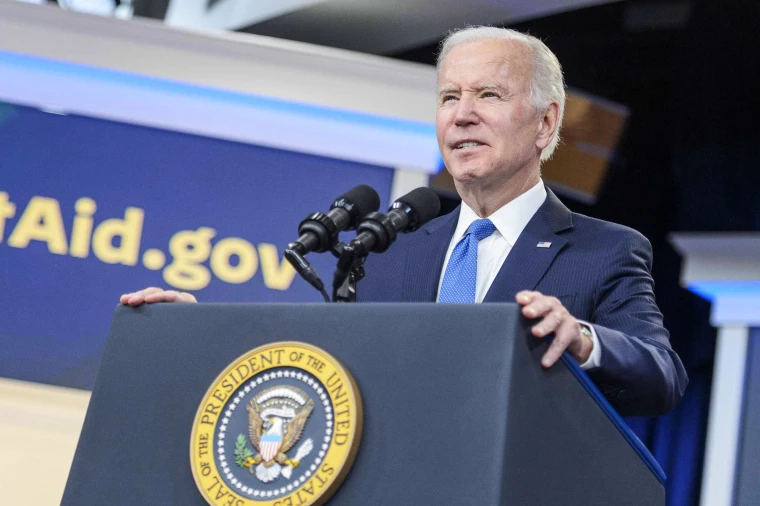As the world continues to grapple with the economic fallout of the COVID-19 pandemic, the United States has been wrestling with a financial crisis of a different kind – the issue of student loan debt. President Joe Biden’s proposed relief measures to alleviate this burden have been widely discussed and analyzed. But how exactly does student debt forgiveness impact homeownership, and what are the broader economic implications? This article seeks to answer these questions by delving into the specifics of the proposed measures, the demographics most affected, and the potential outcomes for the housing market.
President Biden’s Executive Action on Student Debt
President Biden’s administration has proposed an executive action to cancel $10,000 in federal student loan debt. This move has been met with a mixture of optimism and skepticism, with many wondering about the broader impact on the economy and homeownership.
According to a statement from the White House, approximately 45% of borrowers – nearly 20 million people – will have their student debt completely wiped out. This relief will be particularly beneficial to those who have been unable to purchase homes due to their student loan debt of less than $20,000.
The Potential Impact on Home Ownership
While the relief may not drastically alter the state of the housing market immediately, it could potentially facilitate homeownership in the long term. As Toby Mathis, founding partner of Anderson Business Advisors, explains, individuals who were previously unable to afford a home due to their student loan debt may now be able to make the leap into homeownership.
On the other hand, for those severely burdened by debt, the $10,000 relief may not be enough to immediately enable homeownership. However, it may provide the impetus needed to make it a future goal.
The Numbers Behind the Debt
Over 43 million Americans currently hold federal student debt, with approximately a third owing less than $10,000 and over half owing less than $20,000. Although the loan relief amount is unlikely to dramatically alter the home-buying process, Logan Mohtashami, lead analyst at HousingWire, suggests it could assist future renters by freeing up cash flow.
The link between student loans and homeownership is undeniable. A 2021 report by the National Association of Realtors revealed that approximately 60% of non-homeowning millennials stated that student loan debt is delaying them from purchasing a home.
The Challenge of Housing Inventory
While these changes may reduce the debt burden for potential buyers, the lack of homes on the market to meet current demand remains a significant challenge. As Dave Savage, chief innovation officer at Mortgage Coach and Sales Boomerang, notes, the improvement of a homebuyer’s debt-to-income ratio could create more opportunities for first-time homeowners, especially in underserved markets.
However, there is a potential downside – an increase in homebuyers could lead to inflationary pressure on home prices, particularly if more millennials decide to buy a home as a result of debt forgiveness.
How Could it Impact the Economy?
As millions of households adjust their budgets to incorporate their monthly loan payments, economists are raising concerns about the affordability of these payments. Thomas Simons, a senior economist at Jefferies, predicts a significant increase in delinquency rates and a decrease in consumer spending.
Resuming loan payments could also add more pressure to an already strained housing market for first-time homebuyers. Jessica Lautz, deputy chief economist at the National Association of Realtors, notes that student debt has been a significant barrier for those looking to buy their first home.
Legal Challenges and the Supreme Court
However, the plan to cancel billions of dollars in student debt was put on hold after a legal challenge. The plaintiffs argued that the proposal violated the Constitution and federal law, stating that the power to create laws related to student loan forgiveness lies solely with Congress.
The Supreme Court ruled in favor of the plaintiffs, stating that the program was an unlawful exercise of presidential power as it had not been explicitly approved by Congress.
Consequences for Retailers
The resumption of loan payments could have adverse effects for retailers. A survey by CreditKarma.com found that 26% of respondents with outstanding loans stated that the money that was previously being used to pay their student loans is now being utilized to cover bills and other necessities.
Analysts predict a decrease in retail sales as borrowers shift money toward loan payments. Retailers that are likely to be affected include Target, Best Buy, Dick’s Sporting Goods, and Ulta Beauty, given their reliance on Generation X and millennial consumers.
Biden’s Three-Part Plan
Despite the setbacks, President Biden’s administration is determined to provide relief to student loan borrowers. The proposed three-part plan aims to provide more breathing room for America’s working families as they continue to recover from the financial strains caused by the COVID-19 pandemic.
The plan is designed to offer targeted debt relief, make the student loan system more manageable for current and future borrowers, and reduce the cost of college. The relief amount is based on income levels, with the highest relief going to those earning less than $75,000 a year.

President Joe Biden speaks about student debt relief in 2022.
Bonnie Cash / UPI/Bloomberg via Getty Images file
A Long-Term Solution?
While the student debt relief measures may provide short-term relief for many, the long-term effects are yet to be seen. Whether it will impact housing prices, which are already facing downward pressures, will depend on mortgage rates and the number of student debt holders who are now able to purchase a home.
While the proposed measures are a step in the right direction, they are not a panacea. As the debate continues, it is clear that student debt forgiveness is just one piece of the puzzle in addressing the broader economic issues facing the United States.
Conclusion
The road to economic recovery is a long one, and the impact of student debt forgiveness on homeownership is just a small part of a larger picture. However, it provides a glimpse into the potential for policy changes to reshape the economic landscape for millions of Americans. Whether these measures will have a lasting impact remains to be seen, but they certainly represent a significant effort to address an issue that has long burdened the nation’s economy.
For borrowers and potential homeowners, these changes could represent a new beginning. The relief measures may be the catalyst for positive change, and while they may not provide an immediate solution, they represent a hopeful step towards a more equitable future.
The road to recovery is likely to be long and challenging, but with the right policies and a commitment to economic fairness, we can hope for a future where education is a pathway to prosperity, not a roadblock.

